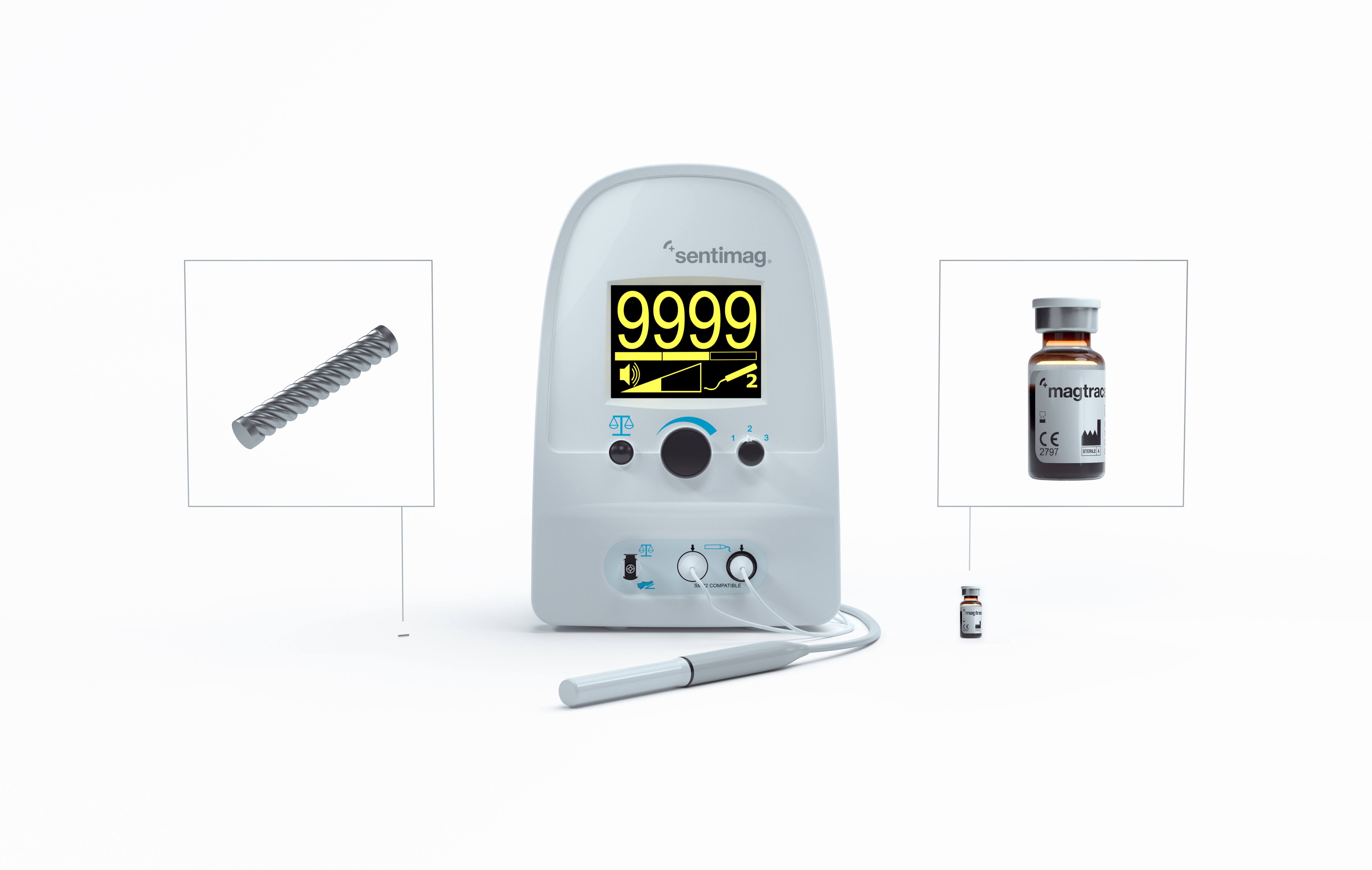Magtrace
Saint Mary’s Hospital is the only hospital in New Haven County that now offers breast cancer patients access to the world’s first non-radioactive, dual-tracer breast cancer staging technology. It’s a simple iron oxide-based magnetic solution called the Magtrace® lymphatic tracer and is designed to simplify breast cancer surgery, while providing a more patient-friendly experience.
The Procedure – What To Expect
1) Injection Of the Magtrace lymphatic tracer
The Magtrace® lymphatic tracer will be injected at a time that suits you and your surgeon. It can be administered at the start of your surgery when you’re under anesthesia, or many days beforehand, timed to coincide with your pre-surgical visit to the hospital. If done beforehand, local anesthetic or a numbing gel may be applied, and your surgeon or radiologist will then use a small needle to inject the liquid into your breast.
2) After the injection
Shortly after the injection, the Magtrace® tracer liquid will flow through your lymphatic system, taking the route a migrating cancer cell would take. It will then collect in the sentinel nodes in your underarm. You will not be able to feel any of this and can continue on as normal until your operation.
In some patients, a small brown mark may appear on the skin where the tracer was injected. This is the remnants of the tracer liquid which has remained under the skin and it is completely harmless.
Numerous studies have shown this doesn’t affect the majority of patients - and for those that do experience this mild blushing, it will go away in time, just like a bruise.
3) After the surgery
Once the breast tissue containing ductal carcinoma in situ (DCIS) has been removed and examined by a pathologist, your surgeon will share the diagnosis with you. This can take any time between a few days and a couple of weeks.
If the diagnosis is one of DCIS without invasive components, meaning the cancer has not spread outside of the ducts, you will be able to avoid an unnecessary Sentinel Lymph Node Biopsy (SLNB) procedure. Over time your body will break down the remaining Magtrace® components and transfer it to the natural iron stores in your body.
In the unfortunate circumstances where invasive cancer cells are identified, Magtrace® will allow your surgeon to easily find and remove the important sentinel lymph nodes marked by the tracer and your SLNB procedure can be scheduled right away.

Ductal carcinoma in situ (DCIS) is considered the earliest form of breast cancer. It occurs when abnormal cells appear inside a milk duct in the breast, but importantly have no spread outside of the ducts.
You may hear DCIS referred to as ‘noninvasive’ or ‘Stage 0’ cancer. It is generally identified through cancer screening methods, such as mammography.
While DCIS is unlikely to spread beyond the breast tissue, it is possible that if left untreated it could spread further, resulting in more invasive disease.
When your surgeon removes DCIS from your breast, it is important to confirm if the cancer has spread to other parts of your body. This determines the ‘stage’ of the disease.
The most common way to find out if the cancer has spread, is to analyze the lymph nodes near your underarm.
If cancer cells break off from their initial position, they will travel through your lymphatic channels to your underarm and collect in the first lymph nodes they reach –the sentinel lymph nodes.
The procedure to confirm whether the cancer has spread is called a sentinel lymph node biopsy (SLNB). This consists of the removal of a selection of lymph nodes for testing and analysis to see if they contain cancer.
The challenge with treating patients with DCIS is determining whether you have noninvasive DCIS, or whether it has developed into a more invasive cancer. For patients with DCIS alone, a SLNB is an unnecessary procedure, as cancer won’t have spread beyond the milk duct. However, because there is a small chance that there may be invasive disease, traditional methods have meant all patients receiving a surgery to remove their DCIS will also be given a SLNB regardless of whether they need it or not.
Fortunately, new medical developments mean that there is now an alternative treatment. A delayed sentinel lymph node biopsy ensures that the only patients who undergo SLNB surgery are those who actually need their nodes removed.
The Magtrace® lymphatic tracer allows your surgeon to mark the sentinel lymph nodes (the first nodes cancer would migrate to if present) in advance or on the day of your surgery.
These nodes will remain marked in this way for many weeks, allowing a pathologist to look at the DCIS tissue removed from your breast and accurately determine if you would benefit from having those marked lymph nodes removed.
The good news is that roughly 80% of patients will have non-invasive DCIS and will be able to avoid lymph node surgery altogether.
For the 20% of patients who will go on to have a SLNB procedure, Magtrace® provides the opportunity to undergo a traditional SLNB, without the need for radioactive drugs and blue dyes, both of which can cause adverse reactions.
Delayed SLNB allows surgeons the time to make well-informed decisions on the best course of treatment for their patients, reducing risk and sparing unnecessary surgery wherever possible.


